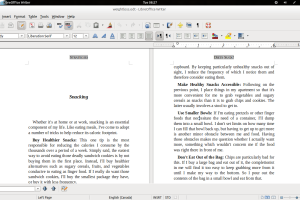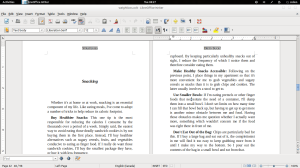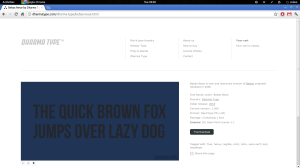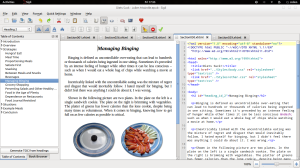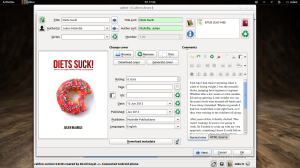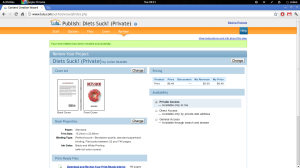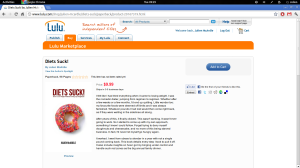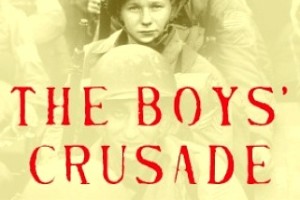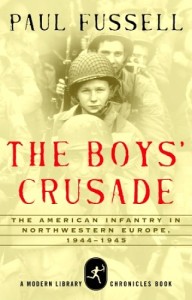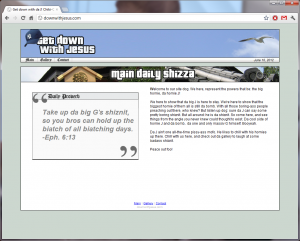It’s interesting to note that my latest project, the book Diets Suck, was completed without spending a single cent. I accomplished this by using open-source software, liberally licensed fonts, and royalty-free imagery. To contribute back into this commons, I am releasing my own work under an open copyright license which allows people to do what they wish as long as they don’t sell it.
The book itself was written using LibreOffice, the open-source equivalent to Microsoft Office. Setting up the book’s formatting with it was a breeze, including making sure that the margins were different depending whether it was a left or right page (you want the content to be further away from the spine) and automatically updating the page references found throughout the text.
For the text inside the book, I used the Liberation Fonts released by Red Hat, the company best known for its enterprise Linux distribution. Contrary to mainstream thought, having a font installed on your computer does not give you carte blanche on its use. That Times New Roman font that comes with Windows isn’t free – Microsoft obtained proper licensing for it from Monotype Imaging Holdings. As for the book’s cover, I made use of two additional fonts: Bebas Neue and Vegur.
Keeping with the theme of the cover, it was made using the open-source GIMP. It’s closest analogue familiar to most readers would be Adobe’s Photoshop.
The image of the doughnut used on the cover came from a royalty-free stock photography website, stock.xchng.
GIMP wasn’t the only tool I used to create imagery. I also used the excellent Inkscape. Whereas GIMP specializes in raster graphics, Inkscape does vector graphics – it’s brother in the proprietary world would be Adobe’s Illustrator. Vector graphic formats are more appropriate when creating images involving simple shapes.
Finally, the book’s electronic edition was completed using a combination of Sigil and Calibre. Sigil to format the text in the ePUB format of electronic books, and Calibre to put the finishing touches such as embedding the cover.
The advent of print-on-demand services such as Lulu meant that publishing paperback copies didn’t cost me either. Even a few years ago, publishing meant a significant investiture, with the printers requiring that I order batches of hundreds of books at a time.
These days I just upload PDFs of the book interior and cover to my account with Lulu, and they do the rest. People can just go to the Diets Suck website, click on a link, and end up on a page hat lets them purchase a single copy. Within days, Lulu will manufacture that book and ship it off to the customer. Best of all, the price for these one-offs is comparable to that of other titles found in bookstores.
This brings me to the last piece in the development of this book, its website. I used Geany as the code editor, and the aforementioned GIMP and Inkscape to create the graphics. I used the W3C Markup Validation Service to make sure the code checked out.
I’m very grateful to the culture of sharing that flourishes online. It is thanks to people who devote their time to making open-source software, who create fonts for others to use, who take pictures and share them, that I was able to create this work.
